Niemcza
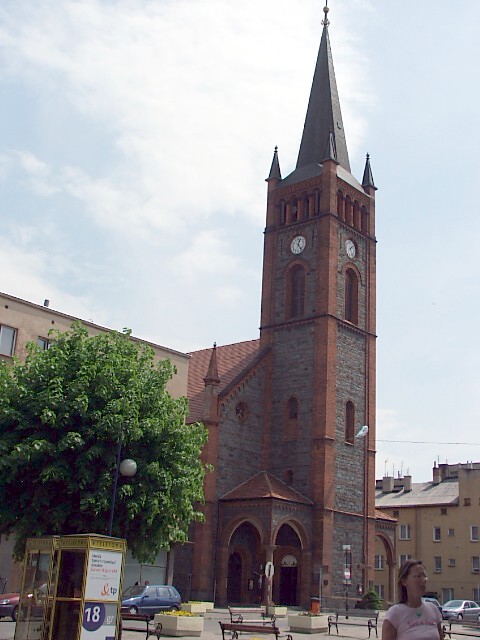
Saint Peter and Paul’s Church at the square in Niemcza
Distance
20 km SV, 15 km V, 56 km E, 42 km NV, 39 km SV, 43 km SV, 42 km SE, 29 km NE, 45 km NV, 52 km NE, 19 km S, 34 km SEPopulation
3.200 (2005)
Location and history
The town and municipality of Niemcza, which is part of Dzierżoniów powiat, is located southwest of Wroclaw at highway # 8 (E67).
The area is known for its quarries that have originated in a distant past and where many different rock types have been mined to date: syenite, gneiss and more.
The land around Niemcza has a very good agricultural land; that this has also been appreciated in prehistoric times can be seen by the fact that the oldest archaeological sites in Poland, which testify to agricultural operations, which are dated to ca. year 4500 BCE, precisely found on the Niemcza and Strzelin heights.
In the 6th year. BCE, a fortified settlement existed on the Niemcza area populated by people belonging to the Sorbian (Slavic) cultural circle. It is known that in the 10th – 11th century. Here was a fortress, surrounded by wood and earth walls, which in 1017 (under King Bolesław Chrobry) defended against a siege of German forces. The city was granted commercial property rights before 1282. The location on the trade route from the Czech Republic to Wrocław was conducive to the development of the city. In 1431, after two months of siege, the city was taken by the Hussites who plundered the city and destroyed the castle. Around 1470 the fortification of the city was rebuilt. The Swedish attack in the 17th century. was devastating for the city. Until 1675, the city belonged to the Principality of Legnica-Brzeg, then under Austria. After 1740 the area around Niemcza came under Prussia – and from 1871 it became part of the united Germany. From 1945 the city again belongs to Poland.
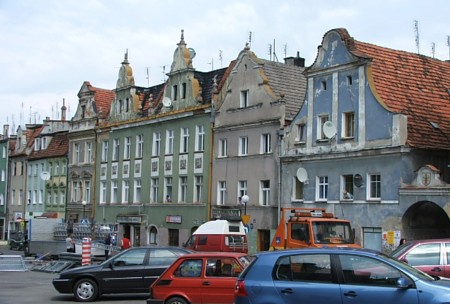
The east side of the square in Niemcza
Tourist attractions
Borgen
Originally the Niemcza area was inhabited by the Slavic tribe ślężanie. After Silesia's incorporation into the Polish state around 990, the fortifications around Niemcza were reinforced to such an extent that they withstood both German and Czech attacks over the next 100 years. A fortified castle was erected in the 14th century on the steep ridge to the east, surrounded by the river Ślęza, on the initiative of Prince Bolek I of Świdnica. However, the castle was destroyed during the attacks of the Hussites in 1429-1434. In the second half of the 15th year. the castle was rebuilt. A rebuild into a Renaissance-style residence took place around 1585. In 1712-24, the Baroque-style St. Jadwiga chapel was built at the castle. The building burned in 1735. A basic rebuild followed in 1830. After 1945, a textile business was housed in the building. In 1964, the castle chapel was demolished.
Saint Wojciech’s Church (Kościół św.Wojciecha)
was probably erected before the year 1000 as one of the first churches in Silesia. The current building that emerged after the Hussite wars dates from 1612. The patron saint of the church was Vojtěch (Polish: Wojciech), who was a bishop of Prague and lived in the second half of the 9th century.
Saint Peter and Paul’s Church (Kościół pw św. Piotra i Pawła)
was built in 1295. It burned in 1633 but rebuilt in 1665. By 1852 it had to be found that the church was in such poor condition that it had to be demolished. A building site was created at the square where the present church was erected. Construction took place in the mid-1860s.
(See the image at the top of the page).
City Hall (Ratusz)
There are records dating back to 1474 about the town hall in Niemcza. The town hall, which burned in 1853, was an impressive Baroque building in the middle of the square. The current building dates from 1865.
Bymuren
After Niemcza gained market rights around 1282, the city was surrounded by a defensive wall with access via two city gates: Brama Dolna (Lower Port leading north, towards Wrocław) and Brama Górna (Upper Port leading south, towards Ząbkowice). The wall was partially destroyed by the army of the Hussites in 1434. To the south and east the wall is double and about 30% is preserved to this day.
Surrounding Area
Wojsławice (about 2 km east of Niemcza)
The arboretum in Wojsławice:
The site Wojsławice has for centuries been known for a large estate, a manor house, where at one time a large park was constructed. In 1880 Fritz von Oheimb became the owner of the property. Oheimb founded the dendrological park. Fritz von Oheimb possessed great knowledge of and love for trees and flowers. He expanded the garden, planted alleys and purchased a rich collection of plants. On his death in 1928, he was buried in his garden. After the last war, the park changed owners several times. In 1977, the park was recognized as an arbor by the Committee on Botanical Gardens and Arboretum. From 1988, the Wojsławice Arboretum is a branch of the Wrocław University Botanical Garden. The area of the arbor has been expanded several times, in 2005 by 60 ha. There is special documentation, with information boards on all plant species in the garden. The arbor serves science and at the same time pleases thousands of guests who are attracted to the lush nature and – among other things. – one of the largest collections of rhododendrons in Poland. In 2005, the number of woody plants was about 2000 different species and varieties. One of the specialty of the arboretum is plants of the heather family (Ericaceae); another is, as mentioned, the rhododendron collection, which numbers about 500 species and varieties. The perennials include approx. 1000 species and varieties. The dendrological specialties of the arboretum are – among many others: Lebanese cedar (Cedrus libani), plum taxa (Cephalotaxus harringtonia), mammoth tree (Sequoiadendron giganteum) and water spruce (Metasequoia glyptostroboides).
Photos from the Arboretum in Wojsławice:
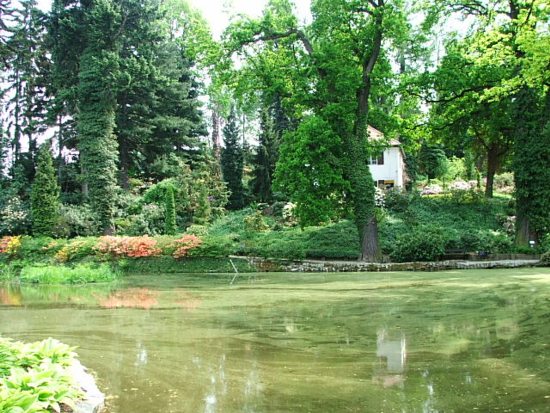
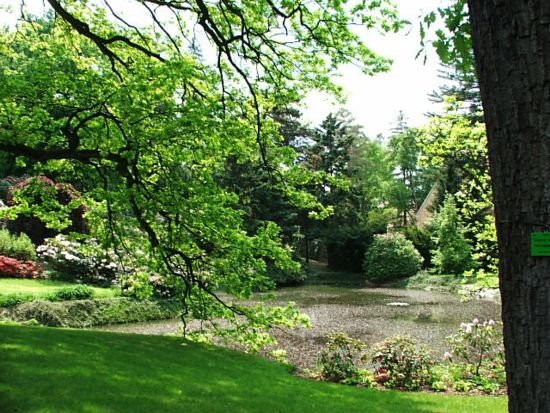
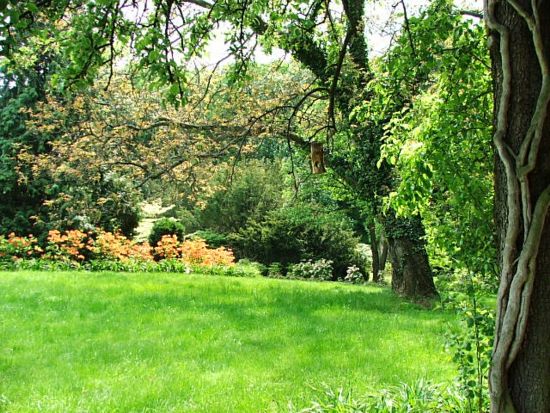
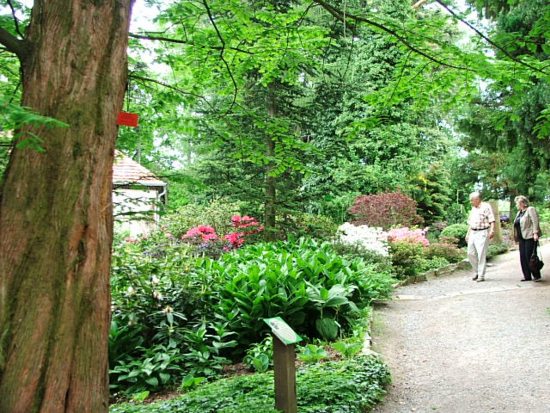
Przerzeczyn-Zdrój (about 5 km south of Niemcza)
The spa town of Przerzeczyn-Zdrój
The spa was founded in the year 1802. Przerzeczyn-Zdrój is located south of Niemcza at highway 8 at an altitude of 240 m. The spa has 5 sanatoriums, a natural medicine clinic, a library, a cafe and a spa park. In particular this patient is referred to patients who suffer from: rheumatic disorders, nerve pain, osteoporosis, respiratory disorders etc.
Accommodation
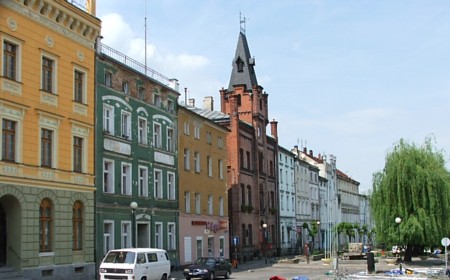
The west side of the square in Niemcza
Other Internet sites and sources
The Arboretum website is this: Arboretum w Wojsławicach
Translated into English by Google Translate. Spangshus.dk accept no liability for any errors or omissions in translation.
Map

Rating
Search
Most used tags
churches (205) Castles (86) Monasteries (79) Town walls (74) Lakes (71) Town halls (67) Rivers (65) Castles1 (62) Mansions (55) Museums (51) Regional museums (38) Town gates (36) Abbey churches (35) Castle ruins (30) Cathedrals (26) Forests (25) Health resorts (24) Water sports (23) Mounds (23) National parks (22)Click for all tags
Denne side er også tilgængelig på dansk. This page and contents is (c) Copyright 2018- www.spangshus.dk. Based on Inviator software by ISCA Software